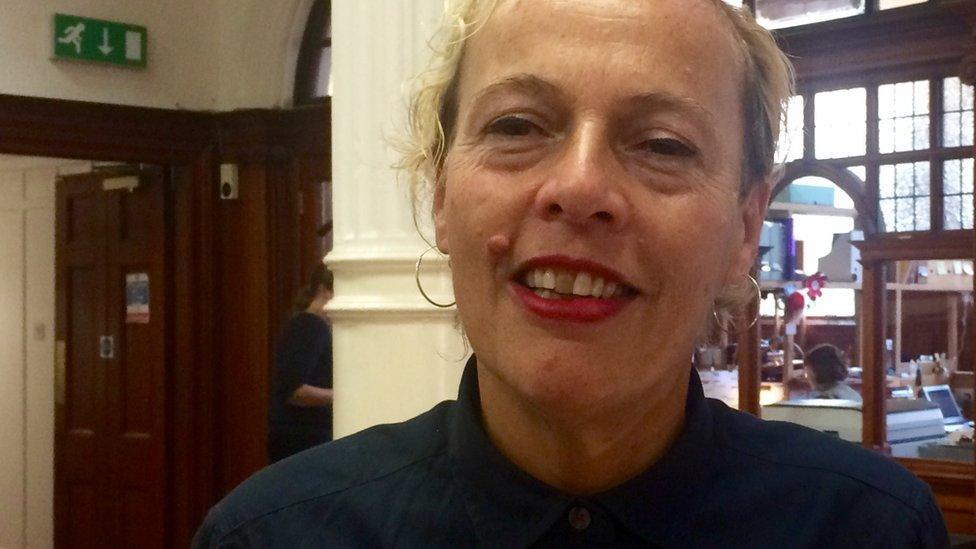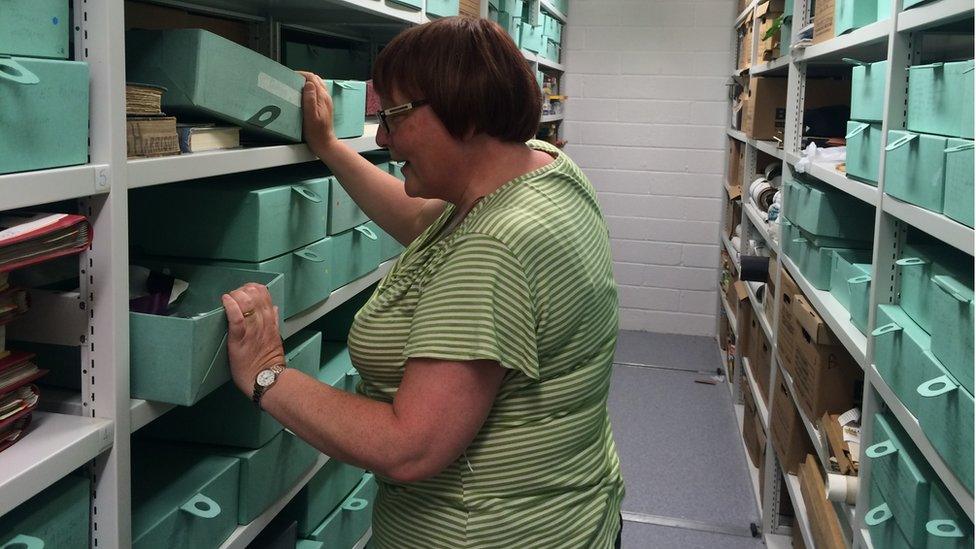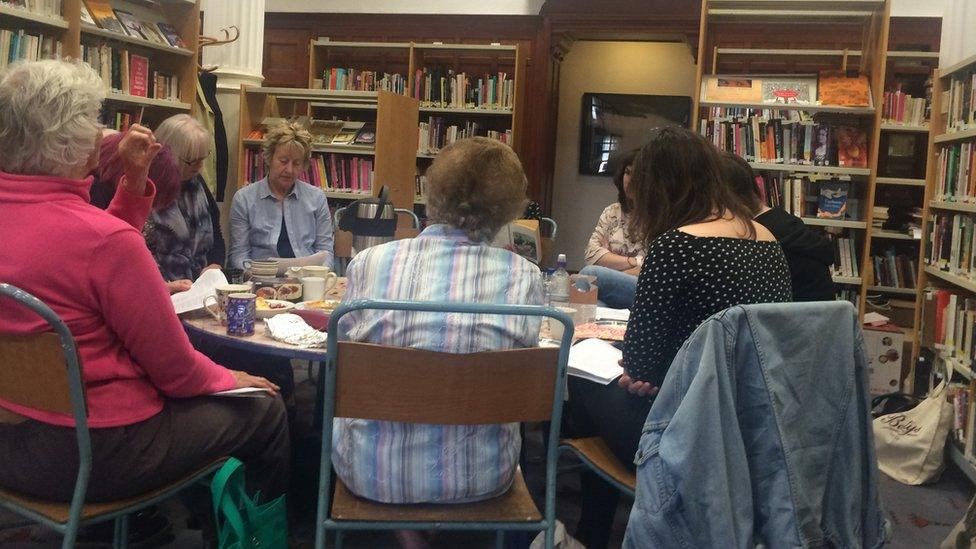Glasgow Women's Library marks 25th anniversary
- Published

The umbrella stand at the library is said to have been painted by suffragettes being held in a nearby prison
A quick glance through the visitors' book at the Glasgow Women's Library is testament to its global reach.
In the past few weeks alone it has welcomed people from Kuwait, mainland Europe, the United States and Canada, as well as Scotland and the rest of the UK. This week it celebrates its 25th anniversary.
Housed in the old Bridgeton library in Glasgow's east end, the warm wood and painted pillars speak to the golden age of libraries. And while in many ways it still looks like a regular library, there are clues that things are a bit different.
There is the healthy noise level for a start and then a beautiful old umbrella stand, said to have been painted by suffragettes being held in a nearby prison.
Adele Patrick was one of the founders of the library in 1991 and is now creative development manager.
"We're hugely ambitious that a resource like ours can change lives when people come into contact with wonderful art, wonderful literature, wonderful books - so we're advocates for culture, but to the widest range of people," she says.


Adele Patrick is one of the founders of the library
The origins of the library came as Glasgow was nominated to be European city of culture in 1990.
There was a feeling from some women, Ms Patrick included, that it would be great if "women's culture and creativity was actually part of the mix, was part of what people would be seeing when they're looking at Glasgow in this new light".
After the year was over, they felt there was still a need for a resource where women could come together, support each other and develop projects. It began with a lot of ambition, but very little money and over the past 25 years it has had a number of different homes across the city.
Now though, it is the UK's only accredited museum dedicated to women's history. Last year it was awarded Recognised Collections of National Significance status by Museum Galleries Scotland.
In the library's first floor museum and archive store, rows of shelving can be opened up to reveal more rows of green boxes. These protect the library's thousands of documents and objects, covering the gamut of female experience.
They include suffragette jewellery and postcards, knitting patterns, girls' annuals, as well as material about Greenham Common and the Commonwealth Games.

Material donated to the library is catalogued by a professional curator
All of the material is donated and for Wendy Turner, the library's first professional museum curator, part of the excitement is that she just does not know what the next phone call offering a donation may bring.
"The challenge really is what story to tell," she says, "because every object will tell a different story for different people."
The library is in the early stages of trying to arrange community curators to talk to people in the local area "to look and engage with the collections and see the stories that the objects tell for them, so not just the story that came with the object".
In the main space on the day I visit, a regular lunchtime reading group is taking place. Women of all ages are sitting round a table, bringing their unique experiences to discussing a book over a cup of tea and food.
"I read all the time and I've got opinions about everything," says book group regular, Annette Gray. She has followed the library since the beginning.

Reading groups are held at the library
"It was the fact that your input was as valuable as anyone else's," she says. "Then there're all these books around that you could be encouraged to borrow."
Mary Kenealy has also been coming to the book group as often as she can. As someone who is profoundly deaf, she has found it an inclusive place where she can nurture her love of reading.
"I think it's a treasure we have in Glasgow," she says.
As she contemplates the library's anniversary, Ms Patrick thinks about some of the other changes she has noticed over the past 25 years, like a blossoming of women in art and literature.
She says: "There's this sort of strange paradox that I'm seeing this massive wealth of fantastic women succeeding across a range of fields but that's still not being felt in the DNA of young women coming forward."
For that reason, she concludes, "there's still a job to be done there".